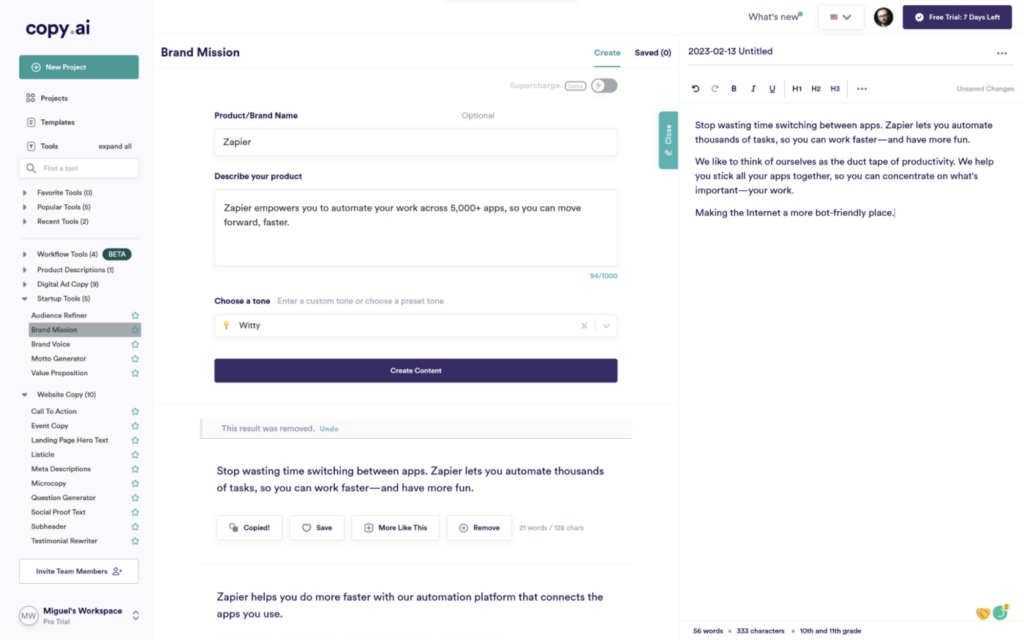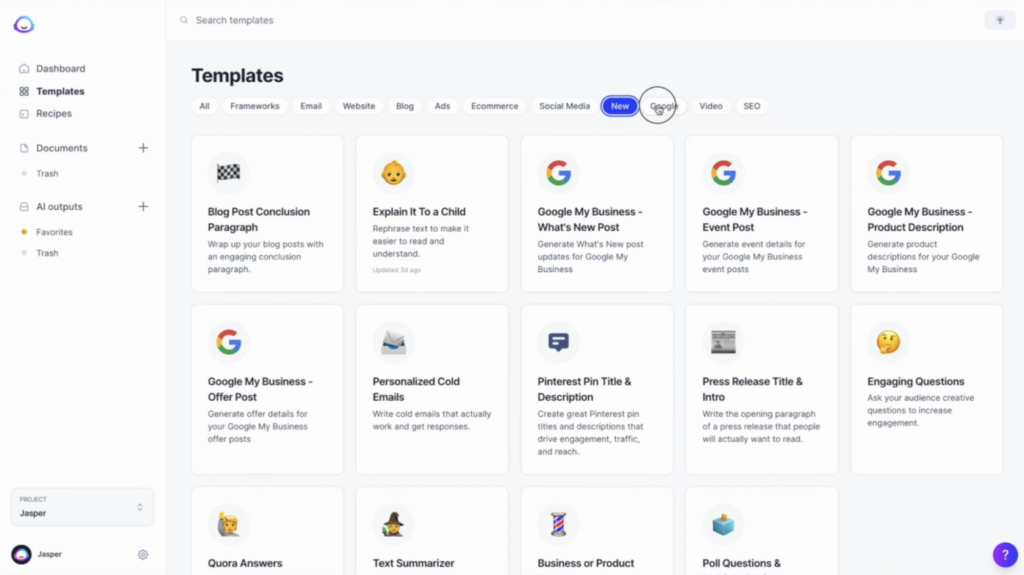
Everyone’s hanging out with ChatGPT, asking for anything from full blog posts to what a particular line of code does. The results are mind-blowing. And while we’re still figuring out how to plug this technology into our workflows, it’s clear that AI tools are changing the game.
But despite being the most popular, ChatGPT is far from the first AI app that hit the market. I’ve been playing around with AI tools for a while now, so I set out to build a list of the best ones available. What I found were hundreds of AI tools to kickstart productivity, save time, and generate ideas. I played with the most popular ones, and based on my experiences, I’ve narrowed down the list for you.
1. AI apps for content creation
Entire movies have been made about writer’s block. The endless staring at the blank page, fighting with yourself to find the perfect set of words to shape ideas, send a message, and influence people. What if there were a shortcut to skip that internal fight?
Copy.ai
The first one is Copy.ai, which helps you get your copywriting in order. Pick a copywriting task from the left menu—anything from brand voice creator to product description or LinkedIn ad copy. Then fill in the inputs, and click to generate content.

I asked Copy.ai to remix Zapier’s brand mission using a witty tone, and here’s the unedited result:
“WE LIKE TO THINK OF OURSELVES AS THE DUCT TAPE OF PRODUCTIVITY. WE HELP YOU STICK ALL YOUR APPS TOGETHER, SO YOU CAN CONCENTRATE ON WHAT’S IMPORTANT—YOUR WORK.“
Interesting starting point, but only if we’re talking to a target audience of makers and bootstrapping entrepreneurs. That’s where the human marketers at Zapier come in to hone and refine the output.
Jasper
Leaning toward content marketing? Jasper is an all-in-one content generation platform, helping you with anything from blog posts to reports, emails, or stories. You can have it explain complex topics, write summaries, and even produce illustrations to pair with the text you’re generating.

It comes with lots of templates and recipes, acting as frameworks to turn your inputs into output that you can edit and prepare for publishing. Jasper wants you to rely on it daily: that’s why it supports custom AI workflows, letting you input all the details about a content project. Then, when you’re done, it’ll start generating all the content types for all your target channels. Tweak, edit, proof, and publish.
Surfer
For content to be visible, it has to pop up in search results, right? Surfer leverages the power of AI to help you grow and maintain the content on your website. I like the name they gave to one of their dashboards: Grow Flow acts like an inbox of things to do to optimize your website content step by step. It detects internal link opportunities and missing keywords, and it can even deliver content ideas weekly, generating outlines you can start writing from.

As you follow the advice that pops up in Grow Flow, your content will become more and more relevant for search engines.
What to look out for:
- For copywriting output, check whether it matches the basics of your brand, such as voice, target audience, and specific trigger words or industry-specific keywords. “Soft fabrics” is not the same as “100% cotton,” and sometimes the AI won’t be accurate with these details.
- For content writing, thoroughly fact-check the writing output: because AI is stringing words (not knowledge) together, “facts” can be imprecise, poorly connected, or outright wrong. Also be sure to inject your own voice, as AI tends to consistently write with the same rhythm and phrase length.
- Watch out for generating too much content—it’s easy to get overwhelmed. Set an objective either in terms of time or number of prompts, and give yourself time to think as you edit.




























